The chopping board is the canvas, and your knife is the brush - Julia Child. But what exactly is a chopping board, and what is its use? How does it make a cook's job not only easy but also efficient? Join us on this flavorful journey as we delve into the different types of chopping board and their uses, where each board has a role – a character – in the grand play of cooking. After all, as the renowned chef Alton Brown wisely remarked, 'A kitchen without a chopping board is like a body without a soul.' Let’s ignite the flames of creativity in your kitchen with the right chopping board in hand!
What is a Chopping Board?
In the kitchen, every cut tells a story. A chopping board, also known as a cutting board, is an essential kitchen tool used for preparing and chopping ingredients. It provides a stable and sanitary surface for cutting, chopping, and slicing various foods, protecting both the countertop and the knife's blade.
Types of Chopping Board
Now, the burning question – which chopping board is the best? The answer lies in your specific needs. Each type of chopping board boasts its own perks and considerations. As the saying goes, 'In the kitchen, a good chopping board is worth its weight in gold.' For example, using a wooden board for fruits and vegetables and a plastic board for meats to prevent cross-contamination. Let's explore different types of chopping board – because in the kitchen, the right board is your culinary sidekick!
Wooden Chopping Board
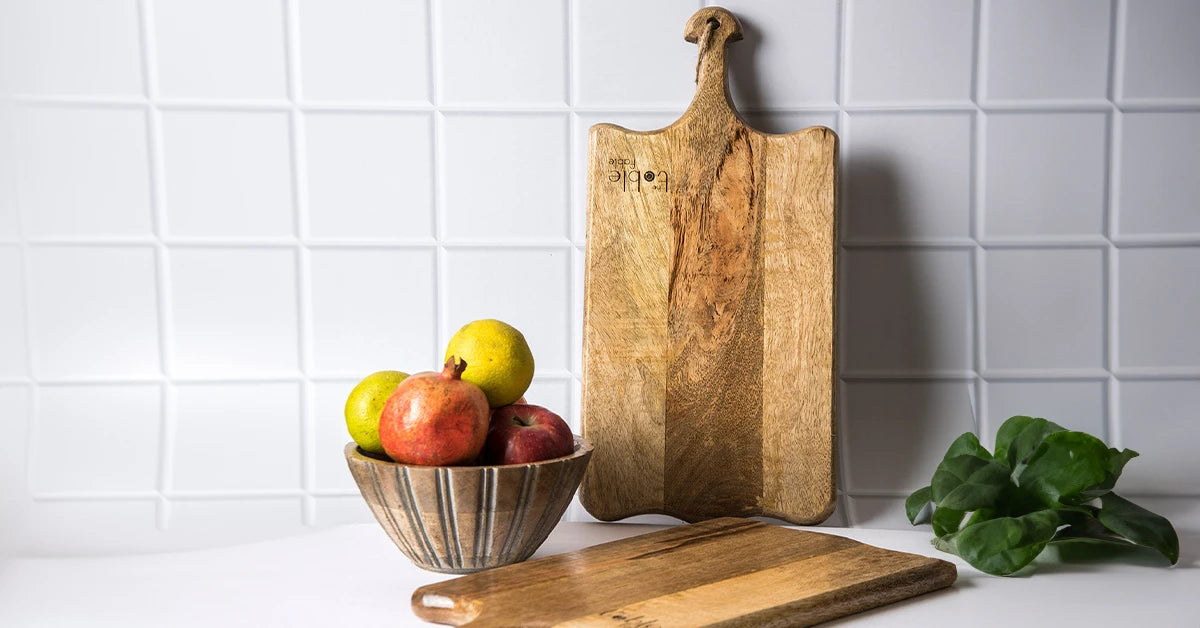
A wooden chopping board is a classic and versatile kitchen tool crafted from various hardwoods such as maple, oak, walnut, or cherry. Loved for its natural beauty, the wooden chopping board adds warmth and character to the kitchen with their natural grains and rich colors, making them a delightful addition to any culinary space. With these attributes, we can confidently say that the wooden chopping board is the best chopping board, especially if you're looking for a versatile option that balances aesthetics, functionality, and ease of maintenance.
Pros:
- Ideal for chopping fruits, vegetables, and herbs.
- Gentler on knives, preserving their sharpness.
- Has natural antimicrobial properties.
Cons:
- Requires regular oiling to prevent cracks.
- Absorbs odors and colors from certain foods.
Plastic Chopping Board
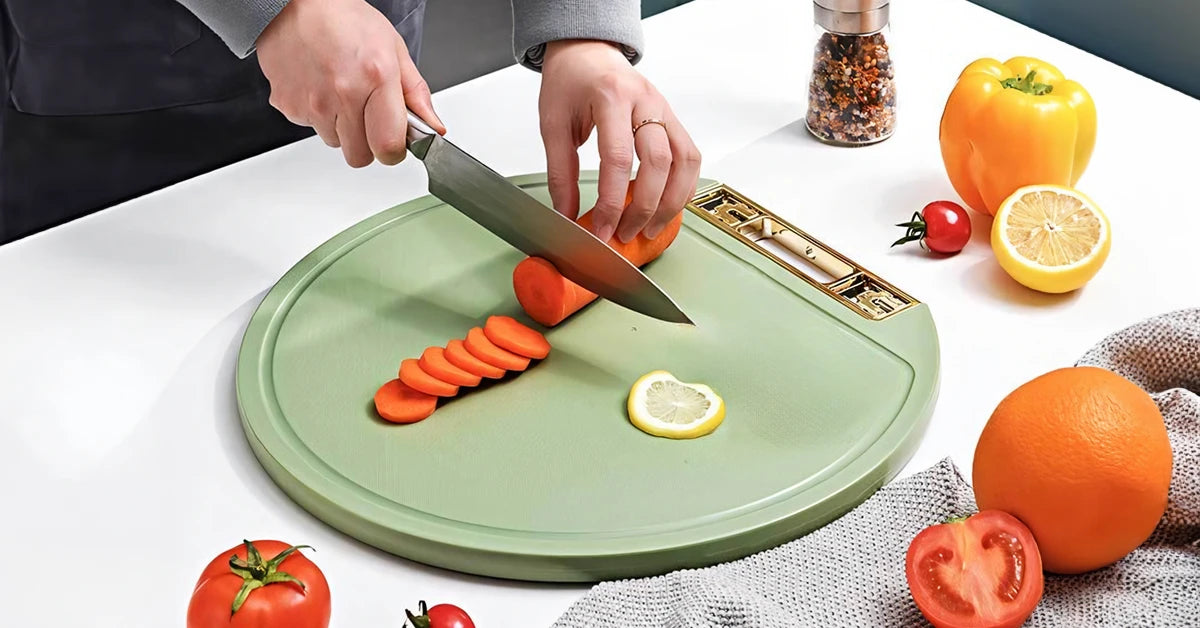
A plastic chopping board is a practical and widely used kitchen essential made from various types of plastic, such as polyethylene or polypropylene. Loved for its affordability, ease of maintenance, and versatility, the plastic chopping board has become a popular choice for households and professional kitchens alike. Many plastic chopping boards come in different colors, allowing users to designate specific boards for different types of food (e.g., red for meat, green for vegetables) to prevent cross-contamination.
Pros:
- Affordable and easy to clean.
- Versatile for chopping meat, poultry, and fish.
- Dishwasher safe.
Cons:
- Prone to knife marks, which can harbor bacteria.
- May become discolored over time.
Glass Chopping Board

A glass chopping board is a modern and sleek kitchen accessory made from tempered glass. This type of chopping board is suitable for chopping a variety of ingredients, from fruits and vegetables to meats. The transparent surface makes it easy to monitor food hygiene.
Pros:
- Hygienic and easy to clean.
- Resistant to stains and odors.
- Does not absorb liquids.
Cons:
- Damages knives quickly.
- Slippery surface.
Stainless Steel Chopping Board

A stainless steel chopping board is a robust kitchen essential. This type of chopping board is built to withstand heavy-duty chopping, slicing, and dicing. They are resistant to scratches and dents, ensuring a long lifespan.
Pros:
- Durable and long-lasting.
- Resistant to bacteria.
- Dishwasher safe.
Cons:
- Noisy when chopping.
- Can be tough on knife edges.
Marble Chopping Board
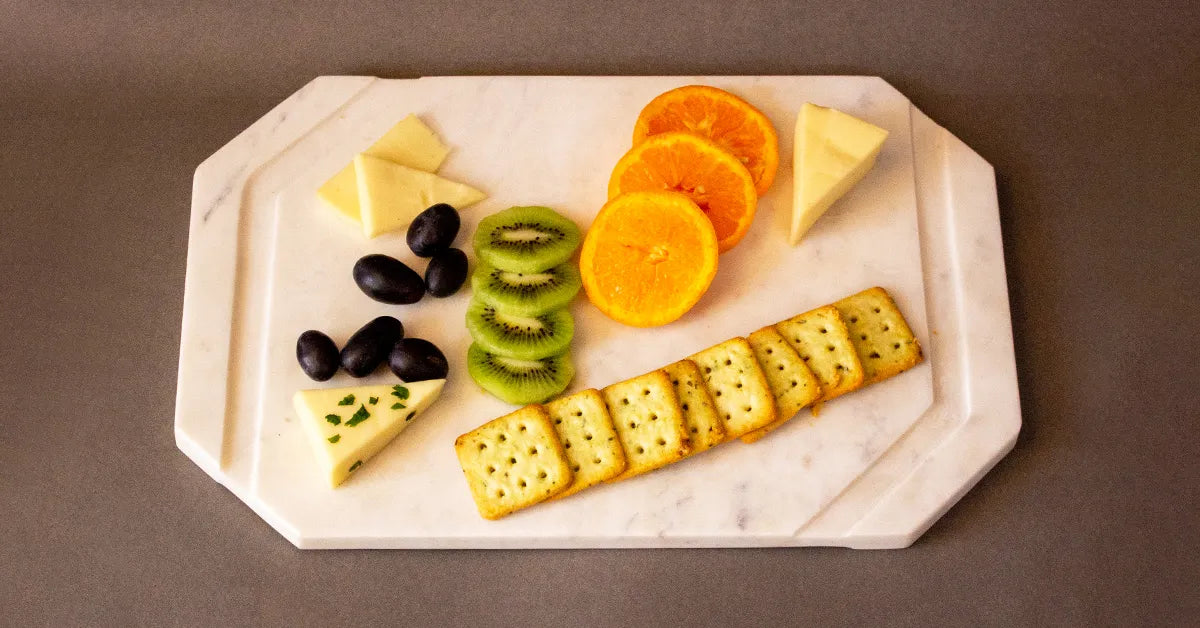
A marble chopping board is a sophisticated and aesthetically pleasing kitchen tool made from natural marble. Renowned for its elegance and functionality, this type of chopping board has gained popularity not only for its visual appeal but also for its unique properties that enhance certain culinary tasks. It often doubles as stylish serving platters, allowing you to present cheeses, charcuterie, or hors d'oeuvres with flair.
Pros:
- Ideal for rolling out dough and pastry.
- Resistant to bacteria.
- Easy to clean.
Cons:
- Heavy and prone to chipping.
- Not suitable for cutting raw meat.
Chopping Board Uses
Embrace the heart of your kitchen with ingenious chopping board uses that go beyond mere slicing and dicing. Certainly! A Chopping board is a versatile kitchen tool, and here are the best uses for them:
| 1. Vegetable and Fruit Preparation: Use a chopping board to chop, slice, and dice various vegetables and fruits. It provides a stable surface for safe and efficient food preparation. |  |
| 2. Meat Cutting: Chopping boards are essential for cutting and preparing different types of meats. They help prevent cross-contamination and make the process more organized. |  |
| 3. Cheese Board: Transform your chopping board into a cheese board for serving a variety of cheeses. Add some crackers, fruits, and nuts for a delightful appetizer or snack platter. |  |
| 4. Bread Slicing: Use a larger chopping board for slicing and serving bread. This keeps your countertops clean and provides a dedicated space for bread preparation. | 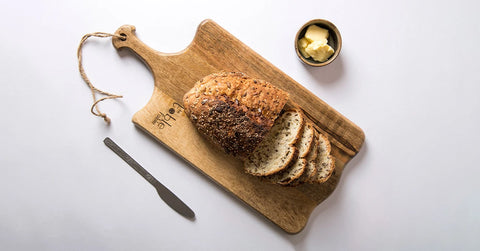 |
| 5. Pizza Cutting: After baking a pizza, use a chopping board for slicing it into neat, even slices. This helps maintain the integrity of the crust and toppings. |  |
| 6. Herb Chopping: Chopping boards are ideal for finely chopping herbs like parsley, basil, or cilantro. The flat surface allows for precise cutting and easy collection of herbs. |  |
| 7. Assembly Station: Use a chopping board as an assembly station for dishes that require layering or arranging components. It provides a clean and organized space for assembling ingredients. | 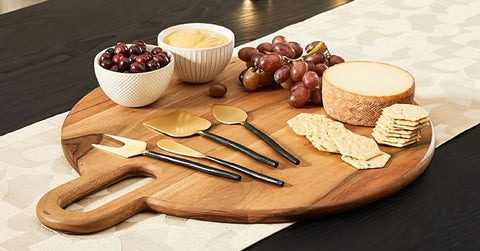 |
| 8. Marinating Meats: Chopping boards can be used for marinating meats. Place the meat on the board, apply your marinade, and let it sit for the desired amount of time. |  |
| 9. Serving Tray: Turn a stylish chopping board into a serving tray for appetizers, charcuterie, or desserts. It adds a rustic touch to your presentation. | 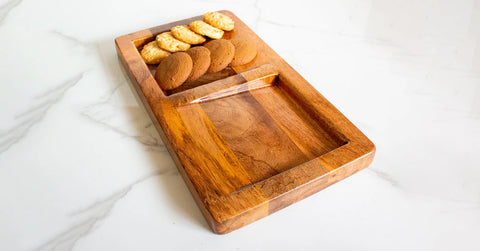 |
| 10. Wooden Trivets: Place chopping boards under hot pots, pans, or baking sheets to protect your countertops from heat damage, effectively acting as wooden trivets. This is particularly useful for delicate surfaces. |  |
Conclusion
In the words of the legendary chef Alton Brown, 'Your cutting board is your greatest kitchen tool. Treat it with respect, and it will return the favor.' So, whether you're crafting a masterpiece or whipping up a quick meal, remember that the right chopping board is more than a surface – it's a canvas for your culinary creations. Cheers to the magic that lies within different types of chopping board and their uses. From the enduring elegance of wooden chopping board to the modern precision of glass, each type has proven to be more than a mere kitchen tool – they are culinary companions that elevate the art of cooking. Check out shop.arcedior newest collection if you're seeking for branded vegetable cutting board.


